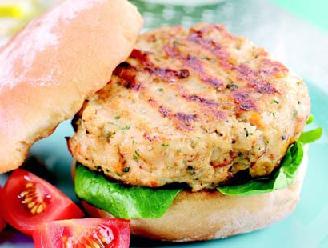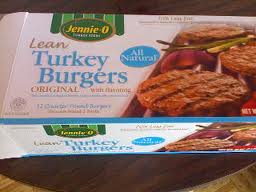In Jan. 1995, a four-year-old girl died in Australia from E. coli O111 after eating contaminated mettwurst, an uncooked, semi-dry fermented sausage; 173 others were sickened.
The company, Garibaldi, blamed a slaughterhouse for providing the contaminated product, while the State’s chief meat hygiene officer insisted that meat inspections and slaughtering  techniques in Australian abattoirs were "top class and only getting better." By Feb. 6, 1995, Garibaldi Smallgoods declared bankruptcy. Sales of smallgoods like mettwurst were down anywhere from 50 to 100 per cent according to the National Smallgoods Council.
techniques in Australian abattoirs were "top class and only getting better." By Feb. 6, 1995, Garibaldi Smallgoods declared bankruptcy. Sales of smallgoods like mettwurst were down anywhere from 50 to 100 per cent according to the National Smallgoods Council.
The outbreak of E. coli O111 and the reverberations fundamentally changed the public discussion of foodborne illness in Australia, much as similar outbreaks of VTEC or shiga-toxin producing E. coli (STEC) in Japan, the U.K. and the U.S. subsequently altered public perception, regulatory efforts and industry pronouncements in those countries.
Yet almost two decades later, history is still being relived.
Japanese media outlets are reporting that two children have died and 56 other people became ill from food poisoning linked to a raw meat dish at a restaurant in central Japan.
One boy died on Wednesday in Fukui Prefecture and the other boy on Friday in Toyama Prefecture after eating dish called Yukhoe served at restaurants run by Foods Forus Co in Kanazawa. The two were infected with E coli O-111 strain.
Yukhoe refers to a variety of hoe (raw dishes in Korean cuisine), which are usually made from raw ground beef seasoned with various spices or sauces. It is basically a Korean steak tartare.
Raw meat is a bad idea.
The company conceded at a news conference that it had failed to carry out hygiene inspections for the last two years of raw meat supplied by a Tokyo-based wholesaler for the dish.
Foods Forus said that it knew its Tokyo-based wholesaler had not sold the beef concerned to be eaten raw, but it served it raw based on its own judgment.
The wholesaler said it was impossible to comment because the person in charge of the sale was absent, Jiji said.
The Japanese apparently have some high-tech bacterial vision goggles that weren’t used in  this case.
this case.
E. coli O111 has shown up in several tragic outbreaks, including the illness of 314 people and one death in Oklahoma in 2008, the sickening of 212 people in New York in 2004 linked to unpasteurized apple cider, and in salad that sickened 56 in Texas in 1999.

(1).jpg) completed on Wednesday.
completed on Wednesday..jpg) department decided how to regulate the newfangled method. … Now restaurants desiring to use the sous vide method must have an approved HACCP plan to do so.”
department decided how to regulate the newfangled method. … Now restaurants desiring to use the sous vide method must have an approved HACCP plan to do so.”.jpg) unpasteurized beverage might improve her health.
unpasteurized beverage might improve her health. even though none of the walnuts have tested positive. The investigation is going on and we are co-operating fully with the government to make sure that nobody gets sick."
even though none of the walnuts have tested positive. The investigation is going on and we are co-operating fully with the government to make sure that nobody gets sick." shelled walnut products described below because these products may be contaminated with may be contaminated with E. coli O157:H7.
shelled walnut products described below because these products may be contaminated with may be contaminated with E. coli O157:H7.  That’s helpful for consumers.
That’s helpful for consumers. burgers or thingies have reached a safe temperature; color is a lousy indicator of safety. That’s why it’s important to reduce loads of dangerous microorganisms in foods before they reach the food service or home kitchen.
burgers or thingies have reached a safe temperature; color is a lousy indicator of safety. That’s why it’s important to reduce loads of dangerous microorganisms in foods before they reach the food service or home kitchen. inspection on the front of each box. The products were packaged on Nov. 23, 2010 and were distributed to retail establishments nationwide.
inspection on the front of each box. The products were packaged on Nov. 23, 2010 and were distributed to retail establishments nationwide.(3).jpg) giving a talk on how to prevent food-borne illnesses at home. Some 700,000 cases of food-borne illnesses are reported in B.C. each year and most are from improper handling and cooking of food at home.”
giving a talk on how to prevent food-borne illnesses at home. Some 700,000 cases of food-borne illnesses are reported in B.C. each year and most are from improper handling and cooking of food at home.”.jpg) and food service operators should not serve them. The cantaloupes, grown in and shipped from Del Monte Fresh’s farm Asuncion Mita in Guatemala, have a light brown color skin on the exterior with orange flesh. The recalled cartons of cantaloupes are dark brown cardboard with the “Del Monte” logo in red lettering and “cantaloupes” in yellow lettering on a green background. The cantaloupes have the lot codes: 02-15-24-10, 02-15-25-10, 02-15-26-10 and 02-15-28-10. No illness has been linked to cantaloupes from other sources.
and food service operators should not serve them. The cantaloupes, grown in and shipped from Del Monte Fresh’s farm Asuncion Mita in Guatemala, have a light brown color skin on the exterior with orange flesh. The recalled cartons of cantaloupes are dark brown cardboard with the “Del Monte” logo in red lettering and “cantaloupes” in yellow lettering on a green background. The cantaloupes have the lot codes: 02-15-24-10, 02-15-25-10, 02-15-26-10 and 02-15-28-10. No illness has been linked to cantaloupes from other sources.  Investigators are using DNA analysis of Salmonella bacteria obtained through diagnostic testing to identify cases of illness that may be part of this outbreak.
Investigators are using DNA analysis of Salmonella bacteria obtained through diagnostic testing to identify cases of illness that may be part of this outbreak.